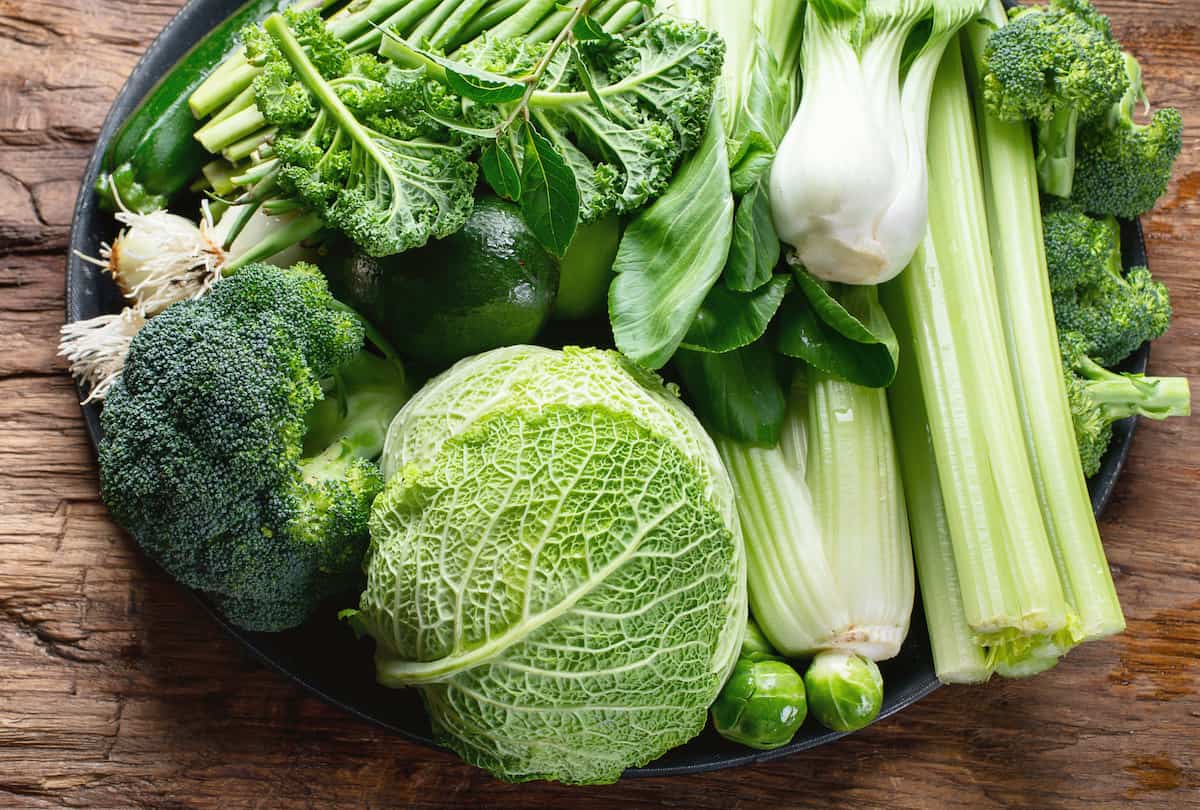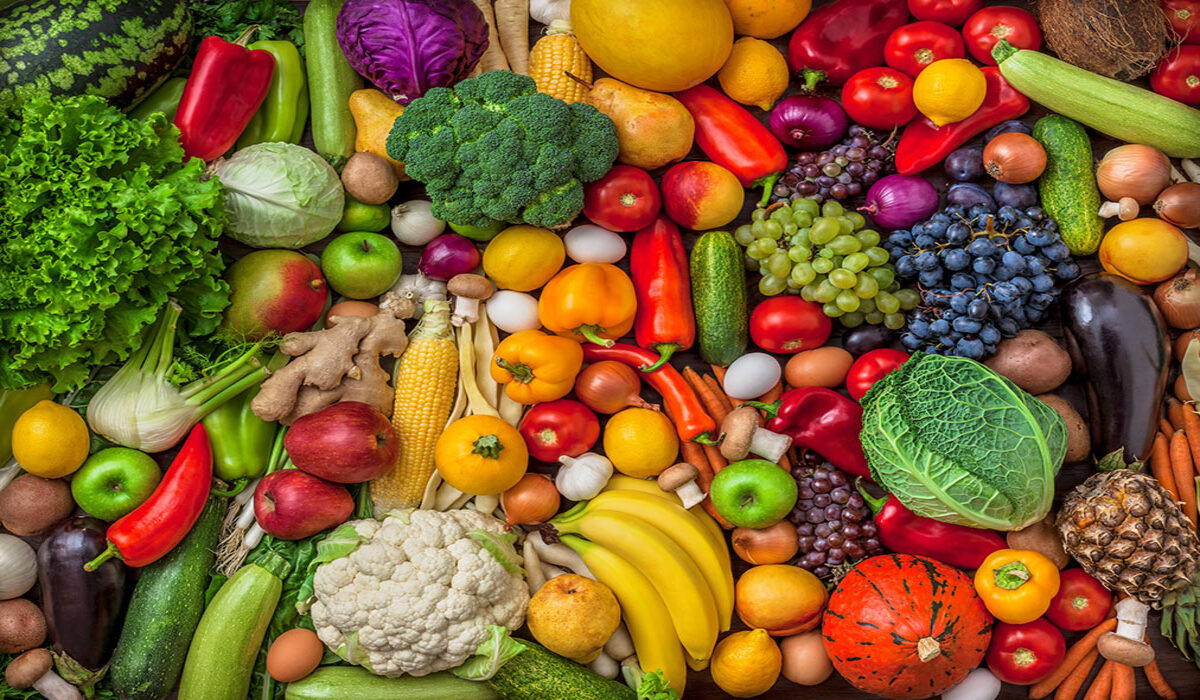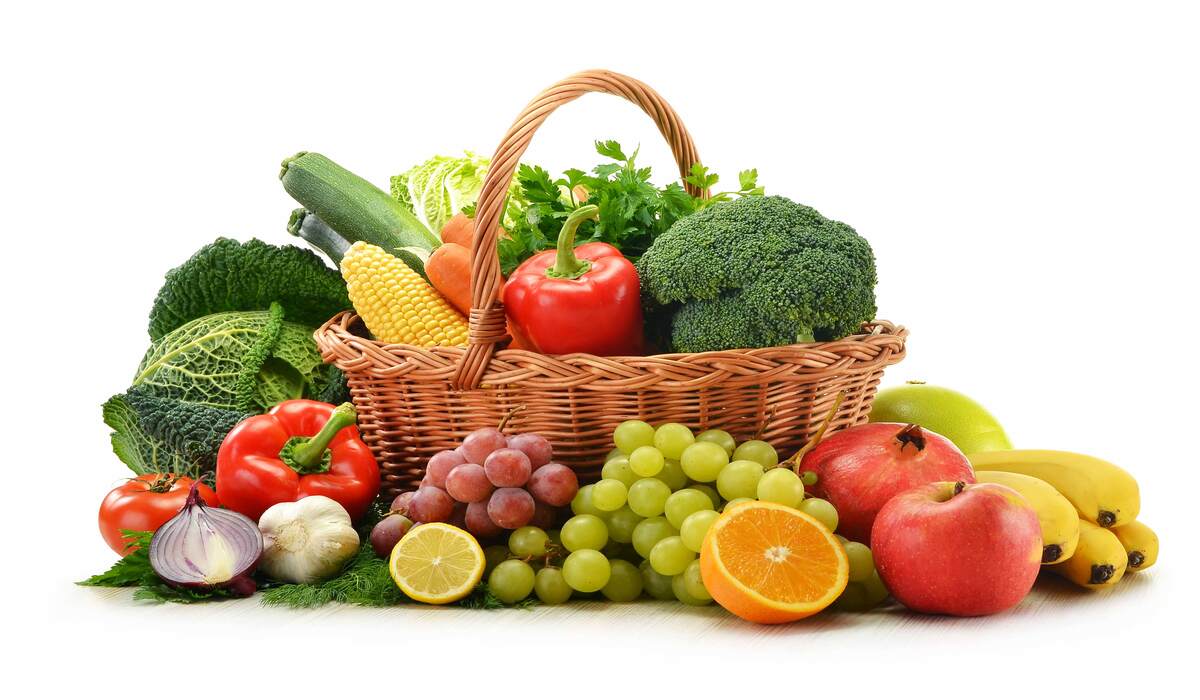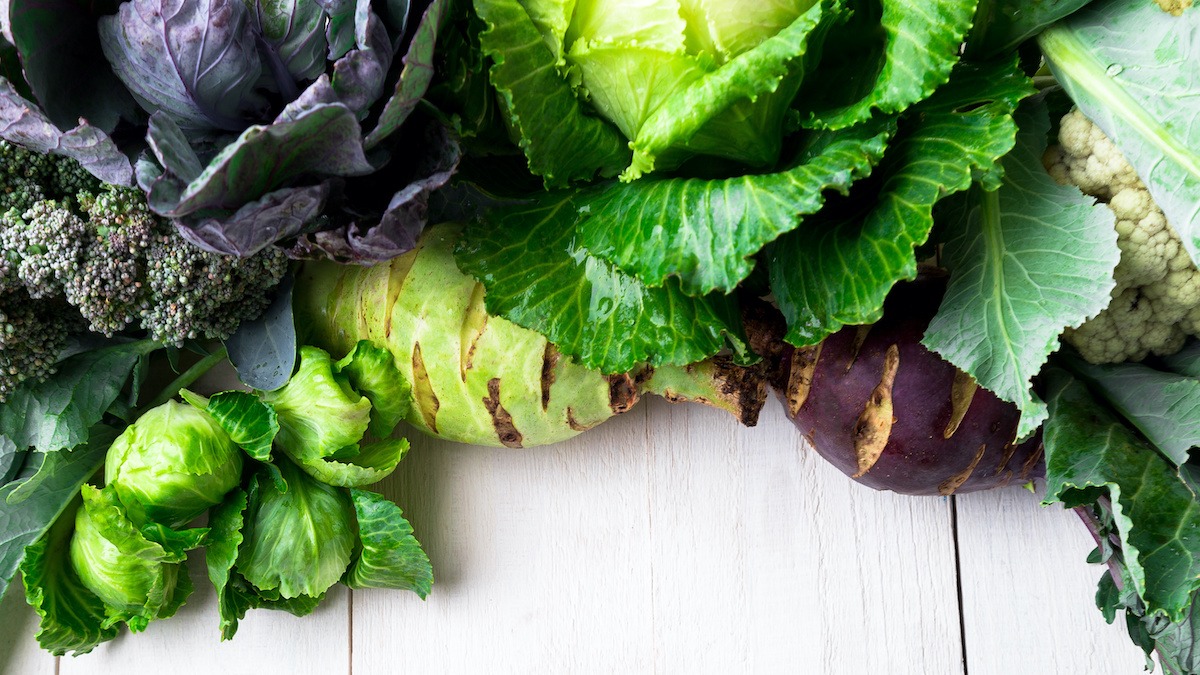Home>Gardening News and Trends>Latest News>What Vegetables Cause Cancer


Latest News
What Vegetables Cause Cancer
Modified: January 22, 2024
Discover the latest news on the link between vegetables and cancer. Stay informed about which vegetables may pose a potential risk, and make educated choices for your overall well-being.
(Many of the links in this article redirect to a specific reviewed product. Your purchase of these products through affiliate links helps to generate commission for Chicagolandgardening.com, at no extra cost. Learn more)
Table of Contents
Introduction
Welcome to our article where we explore the topic of vegetables that may have potential carcinogenic effects. As we all know, vegetables are an essential part of a healthy diet, providing a wide range of essential nutrients and antioxidants that promote overall well-being and help prevent various diseases, including cancer. However, it is important to note that not all vegetables are created equal.
While the majority of vegetables are highly nutritious and beneficial for our health, there are a few exceptions to be aware of. Some vegetables have been found to contain certain compounds that, when consumed in large amounts or under specific circumstances, might have the potential to increase the risk of developing certain types of cancer.
In this article, we will delve into the research findings surrounding these potentially carcinogenic vegetables, discussing their potential effects and offering insights on how to incorporate them into a balanced diet. It is essential to approach this topic with an open mind, as the goal is not to demonize vegetables but rather to provide a comprehensive understanding of their potential impact on our health.
Before we explore the individual vegetables in question, it is crucial to note that while some researchers have suggested potential links between these vegetables and cancer, the evidence is not conclusive. The field of nutrition science is complex, and multiple factors, including genetics, lifestyle, and overall diet, can influence the development of cancer. It is always recommended to consult with a healthcare professional or registered dietitian for personalized advice.
With this in mind, let us dive into the world of vegetables and explore which ones have been associated with potential carcinogenic effects, as well as the scientific research behind these claims.
Carcinogenic Vegetables
While the majority of vegetables are considered healthy and beneficial, there are a few vegetables that have raised concerns due to their potential carcinogenic effects. It is important to note that the presence of certain compounds in these vegetables does not necessarily mean they directly cause cancer. However, the consumption of these vegetables in large amounts or under specific circumstances could potentially increase the risk of developing certain types of cancer.
One group of vegetables that has garnered attention in terms of potential carcinogenic effects is the nightshade family. Nightshade vegetables, including tomatoes, potatoes, eggplant, and peppers, contain a compound called solanine, which has been associated with inflammation and potential adverse health effects. However, the levels of solanine in these vegetables are generally low, and the potential risk is most significant for individuals with specific sensitivities or conditions.
Another group of vegetables that has been linked to potential cancer risks is processed and charred vegetables. When vegetables are cooked at high temperatures or undergo grilling, frying, or charring, certain compounds called heterocyclic amines (HCAs) and polycyclic aromatic hydrocarbons (PAHs) can form. Consumption of HCAs and PAHs has been associated with an increased risk of colorectal, pancreatic, and prostate cancers. To minimize the formation of these compounds, it is recommended to cook vegetables using methods such as steaming, boiling, or sautéing instead of high-temperature cooking techniques.
Furthermore, the use of specific cooking oils in conjunction with high-temperature cooking methods can also contribute to the formation of harmful compounds in vegetables. Certain oils, such as vegetable oil, canola oil, and soybean oil, have a lower smoke point, which means they can break down and produce toxic byproducts when heated at high temperatures. Instead, opt for oils with higher smoke points, such as avocado oil or coconut oil, when cooking vegetables at higher temperatures.
Overall, it is important to note that the potential carcinogenic effects of these vegetables are not definitively proven. The studies available have shown associations and suggested potential risks, but more research is needed to establish conclusive evidence. It is also crucial to consider individual factors such as genetics, overall diet, and lifestyle when assessing the potential impact of these vegetables on cancer risk.
Now that we have explored some potentially carcinogenic vegetables, let us delve deeper into two specific groups of vegetables that have generated significant interest in relation to cancer prevention: cruciferous vegetables and nightshade vegetables.
Research Findings
The potential link between certain vegetables and cancer has been a subject of study and debate among researchers. While the evidence is not definitive, several studies have shed light on the potential effects of specific vegetables on cancer risk.
One group of vegetables that has been extensively studied for its cancer-fighting properties is cruciferous vegetables. This group includes broccoli, cauliflower, Brussels sprouts, kale, and cabbage, among others. Cruciferous vegetables contain compounds called glucosinolates, which are metabolized in the body into substances that have been shown to have anti-cancer effects. These substances have been associated with the inhibition of tumor growth, the induction of apoptosis (programmed cell death) in cancer cells, and the reduction of inflammation.
A study published in the Journal of the American Dietetic Association found that higher intake of cruciferous vegetables was associated with a decreased risk of several types of cancer, including lung, colorectal, breast, and prostate cancer. The study suggested that the protective effects could be attributed to the high levels of isothiocyanates and indoles present in cruciferous vegetables.
On the other hand, some studies have raised concerns about the potential adverse effects of nightshade vegetables. Nightshade vegetables, such as tomatoes, potatoes, eggplant, and peppers, contain solanine, a natural pesticide that is known to be toxic in high quantities. Although the levels of solanine in these vegetables are generally low and unlikely to cause harm to healthy individuals, some individuals may be more susceptible to the potential adverse effects.
Additionally, studies have explored the impact of cooking and preparation methods on the potential carcinogenic effects of vegetables. High-temperature cooking techniques, such as grilling, frying, or charring, can lead to the formation of compounds like heterocyclic amines (HCAs) and polycyclic aromatic hydrocarbons (PAHs), which have been associated with increased cancer risk.
A study published in the Journal of Agricultural and Food Chemistry found that boiling vegetables resulted in the least formation of HCAs and PAHs compared to grilling or frying. Steaming and sautéing were also found to be safer cooking methods. Additionally, using cooking oils with higher smoke points, such as avocado oil or coconut oil, can help minimize the production of harmful compounds.
It is worth mentioning that the impact of these cooking methods and oils vary depending on the vegetable being cooked. For instance, leafy green vegetables are less likely to form harmful compounds when cooked using high-temperature methods compared to starchy vegetables like potatoes.
While research findings provide valuable insights, it is important to approach them with caution. The studies mentioned above present associations and potential risks, but they do not establish causation. More research is needed to fully understand the complex relationship between vegetable consumption, preparation methods, and cancer risk.
In the next sections, we will discuss the potential benefits and risks associated with cruciferous vegetables and nightshade vegetables in more detail.
Cruciferous Vegetables
Cruciferous vegetables, including broccoli, cauliflower, Brussels sprouts, kale, and cabbage, have gained significant attention for their potential cancer-fighting properties. These vegetables belong to the Brassicaceae family and are rich in nutrients, fiber, and phytochemicals.
One of the key components of cruciferous vegetables that has been extensively studied is a group of sulfur-containing compounds called glucosinolates. When these vegetables are chewed or chopped, glucosinolates are broken down into biologically active compounds, such as isothiocyanates and indoles. These compounds have demonstrated anti-cancer effects in various laboratory and animal studies.
A study published in the Journal of Nutrition found that higher cruciferous vegetable consumption was associated with a decreased risk of lung, colorectal, breast, and prostate cancers. The isothiocyanates and indoles derived from cruciferous vegetables were suggested to contribute to this protective effect by inhibiting tumor growth, inducing apoptosis in cancer cells, and modulating hormone metabolism.
In particular, sulforaphane, one of the key isothiocyanates found in cruciferous vegetables, has been shown to possess potent anti-cancer properties. Research has indicated that sulforaphane enhances the body’s ability to detoxify carcinogens and reduce oxidative stress, thus reducing the risk of several types of cancer.
Additionally, cruciferous vegetables are also rich in antioxidants, including vitamins C and E, which help neutralize free radicals and protect cells from DNA damage. The high fiber content of these vegetables has also been associated with a reduced risk of colorectal cancer.
While the evidence suggests that cruciferous vegetables offer potential cancer-fighting benefits, it is important to incorporate them as part of a balanced diet. Eating a variety of vegetables, including those from other families, is essential to obtain a broad spectrum of nutrients and antioxidants.
It is worth noting that individuals with certain thyroid conditions may need to moderate their consumption of cruciferous vegetables due to their goitrogenic effects. Goitrogens are compounds that can interfere with thyroid function by inhibiting the uptake of iodine. However, cooking cruciferous vegetables can reduce their goitrogenic effects, making them safer for individuals with thyroid concerns.
Overall, incorporating cruciferous vegetables into your diet provides a wide array of health benefits. These vegetables are not only a source of essential nutrients but also contain bioactive compounds that have shown promising anti-cancer effects. Including a variety of cruciferous vegetables in your meals can be a delicious and nutritious way to support your overall health and well-being.
Nightshade Vegetables
Nightshade vegetables, which include tomatoes, potatoes, eggplant, and peppers, have been a subject of discussion when it comes to their potential health effects. These vegetables belong to the Solanaceae family and are popularly consumed worldwide for their taste and versatility in cooking.
One compound found in nightshade vegetables is solanine, a natural toxin that acts as a defense mechanism in the plants. Solanine has been associated with potential adverse health effects when consumed in large quantities or by individuals with specific sensitivities or conditions.
However, it is important to note that the levels of solanine in nightshade vegetables are generally low and unlikely to cause harm to healthy individuals. The digestive system typically breaks down and eliminates solanine efficiently, preventing any significant accumulation in the body.
Additionally, some studies have actually indicated potential health benefits associated with consuming nightshade vegetables. Tomatoes, for example, are known for their high content of lycopene, a powerful antioxidant that has been linked to a reduced risk of certain types of cancer, including prostate cancer.
Potatoes, when consumed in moderation and prepared healthily, can be a nutritious addition to one’s diet. They are a good source of vitamins, minerals, and fiber. However, it is important to avoid consuming green or sprouted potatoes, as they may contain higher levels of solanine, which can be detrimental to health.
Eggplant, another member of the nightshade family, is rich in dietary fiber, vitamins, and minerals. It also contains various antioxidants, such as nasunin, which have demonstrated anti-inflammatory and neuroprotective properties in animal studies.
The spicy peppers within this vegetable group, such as jalapenos and chili peppers, contain capsaicin, a compound known for its analgesic and anti-inflammatory effects. Capsaicin has also been associated with potential benefits for weight management and cardiovascular health.
It is important to note that individuals with specific health conditions, such as arthritis or digestive disorders, may experience sensitivities to nightshade vegetables. For such individuals, it may be helpful to monitor their consumption and consult with a healthcare professional or registered dietitian for guidance.
Overall, nightshade vegetables can be enjoyed as part of a balanced diet, providing a range of nutrients and flavors. However, if you have any concerns or sensitivities, it is best to consult with a healthcare professional or registered dietitian to determine the best approach for your individual needs.
Non-Organic vs. Organic Vegetables
The choice between non-organic and organic vegetables is a topic that often arises when considering the potential health benefits and risks associated with vegetable consumption. Non-organic vegetables are conventionally grown using synthetic pesticides, fertilizers, and other additives, while organic vegetables are grown without the use of synthetic chemicals.
One of the main concerns with non-organic vegetables is the presence of pesticide residues. Pesticides are used in conventional farming to protect crops from pests and diseases. However, prolonged exposure to these chemical residues has raised concerns about potential adverse health effects, including an increased risk of certain types of cancer and disruption of hormonal balance.
On the other hand, organic vegetables are cultivated using natural methods, such as crop rotation, biological pest control, and the use of organic fertilizers. These practices aim to minimize pesticide residues and promote environmental sustainability. Studies have shown that organic vegetables tend to have lower levels of pesticide residues compared to their non-organic counterparts.
While the evidence suggests that organic vegetables may have fewer pesticide residues, it is important to note that the overall health benefits of consuming organic vegetables are still debated. The nutritional content of organic and non-organic vegetables is generally similar, with both providing essential vitamins, minerals, and antioxidants.
Additionally, it is crucial to acknowledge that the organic label does not guarantee complete absence of pesticide residues. Organic farmers are permitted to use certain approved pesticides derived from natural sources. However, these pesticides must meet strict standards and undergo rigorous evaluation to ensure their safety and minimize potential harm.
When considering the choice between organic and non-organic vegetables, it is essential to assess individual factors such as budget, availability, and personal preferences. If buying organic is feasible and aligns with your values, it can be a way to support sustainable farming practices and potentially reduce exposure to synthetic pesticides. However, if organic options are limited or cost-prohibitive, consuming a variety of non-organic vegetables is still beneficial for overall health.
Regardless of whether you choose organic or non-organic vegetables, it is important to prioritize consuming a diverse range of vegetables as part of a balanced diet. Washing and rinsing all vegetables thoroughly can help remove some pesticide residues, regardless of their farming practices. Additionally, buying locally-grown vegetables from small-scale farmers or participating in community-supported agriculture (CSA) programs can provide an opportunity to support sustainable and environmentally-friendly farming practices.
In summary, the choice between organic and non-organic vegetables ultimately depends on personal preference, budget, and availability. Both options can offer health benefits, and the key is to focus on consuming a wide variety of vegetables to obtain the necessary nutrients and antioxidants for optimal well-being.
Cooking and Preparation Methods
When it comes to the potential health effects of vegetables, it is not only the choice of vegetables that matters but also how they are prepared and cooked. The cooking and preparation methods can significantly impact the nutrient content and potential formation of harmful compounds in vegetables.
One important consideration is the use of high-temperature cooking techniques, such as grilling, frying, or charring. While these methods can impart a desirable flavor and texture to vegetables, they can also lead to the formation of compounds known as heterocyclic amines (HCAs) and polycyclic aromatic hydrocarbons (PAHs).
Studies have linked the consumption of HCAs and PAHs to an increased risk of colorectal, pancreatic, and prostate cancers. To minimize the formation of these compounds, it is recommended to opt for cooking methods that involve lower temperatures, such as steaming, boiling, or sautéing.
Another consideration is the type of oil used for cooking vegetables at higher temperatures. Certain cooking oils, such as vegetable oil, canola oil, and soybean oil, have lower smoke points, which means they can break down and produce toxic byproducts when exposed to high temperatures.
Choosing cooking oils with higher smoke points, such as avocado oil or coconut oil, can help minimize the production of harmful compounds when cooking vegetables at higher temperatures. These oils are more stable and can better withstand heat without undergoing undesirable chemical changes.
It is important to note that the impact of cooking methods and oils can vary depending on the specific vegetable being cooked. Leafy green vegetables, for example, are less likely to form harmful compounds when cooked using high-temperature methods compared to starchy vegetables like potatoes.
Furthermore, the duration of cooking can also impact the nutrient content of vegetables. To retain as many nutrients as possible, it is recommended to cook vegetables for shorter periods of time and avoid overcooking. Steaming vegetables, in particular, can help preserve their nutritional value, as it allows for gentle heat exposure without excessive loss of water-soluble vitamins and minerals.
On the other hand, raw consumption of vegetables can provide additional benefits. Raw vegetables tend to retain their enzymes and certain heat-sensitive nutrients, such as vitamin C and certain B vitamins. Incorporating raw vegetables into your diet, such as in salads or as crunchy snacks, can provide a refreshing and nutrient-rich addition to your meals.
Overall, the choice of cooking and preparation methods can significantly affect the nutrient content and potential formation of harmful compounds in vegetables. Opting for lower-temperature cooking methods, choosing cooking oils with higher smoke points, and avoiding overcooking can help maximize the health benefits of vegetables while minimizing potential risks. Experimenting with different cooking techniques and incorporating both raw and cooked vegetables into your diet can provide a variety of textures and flavors, ensuring a well-rounded and nutritious eating experience.
Conclusion
Vegetables play a crucial role in maintaining a healthy and balanced diet. While the majority of vegetables offer numerous health benefits, it is important to be aware of certain factors that may contribute to potential risks. This article explored the potential impact of specific vegetables on cancer risk, the benefits of cooking methods, and the choice between organic and non-organic vegetables.
While some vegetables, like cruciferous vegetables, have shown promising cancer-fighting properties due to their compounds, such as isothiocyanates and indoles, others have raised concerns, such as nightshade vegetables, due to the presence of compounds like solanine. Further research is necessary to establish definitive links and better understand the complex relationship between vegetable consumption and cancer risk.
Cooking and preparation methods for vegetables also play a significant role in maintaining their nutritional value and minimizing potential risks. Gentle cooking techniques like steaming, boiling, or sautéing at lower temperatures help preserve nutrients and reduce the formation of harmful compounds. Additionally, choosing cooking oils with higher smoke points can further minimize the risk of producing toxic byproducts.
When considering organic versus non-organic vegetables, it is essential to weigh the potential benefits of reducing pesticide exposure against individual factors such as budget and availability. Both organic and non-organic vegetables can provide essential nutrients and antioxidants, so the focus should be on consuming a diverse range of vegetables regardless of their farming practices.
In conclusion, vegetables remain an integral part of a healthy diet. The key is to maintain a balanced approach by consuming a variety of vegetables, incorporating different cooking methods, and being mindful of individual factors. Consulting with healthcare professionals or registered dietitians can provide personalized guidance on incorporating vegetables into your diet while considering specific health concerns or dietary needs. Enjoy the multitude of flavors, textures, and health benefits that vegetables offer, and let them contribute to your overall well-being.









